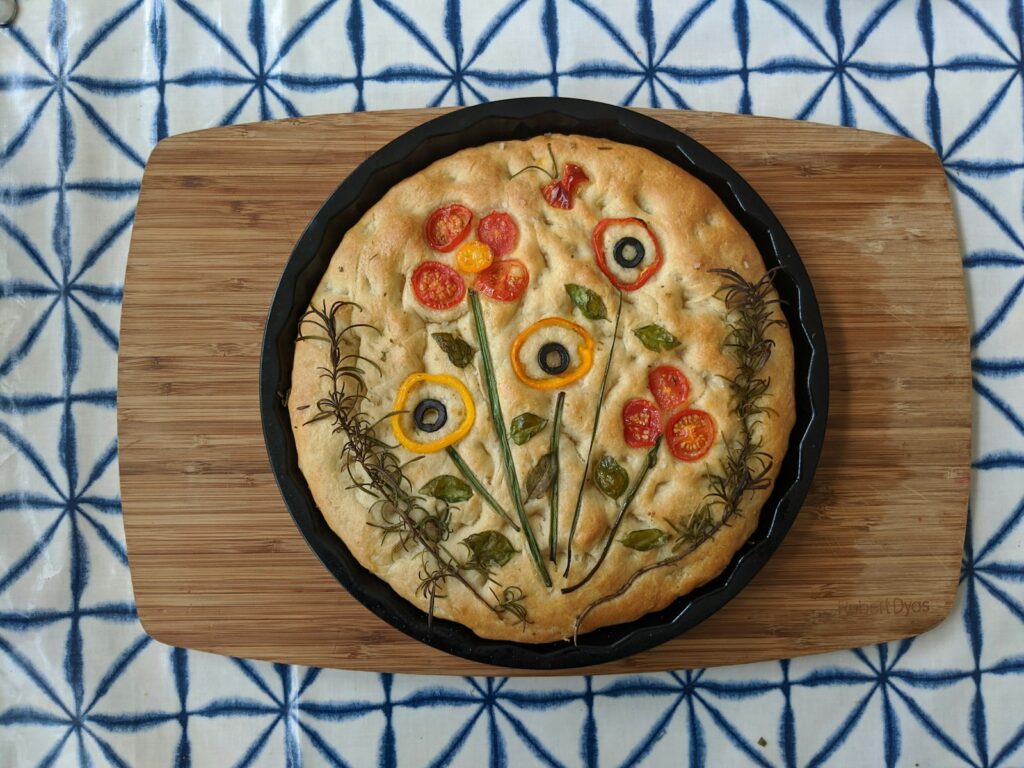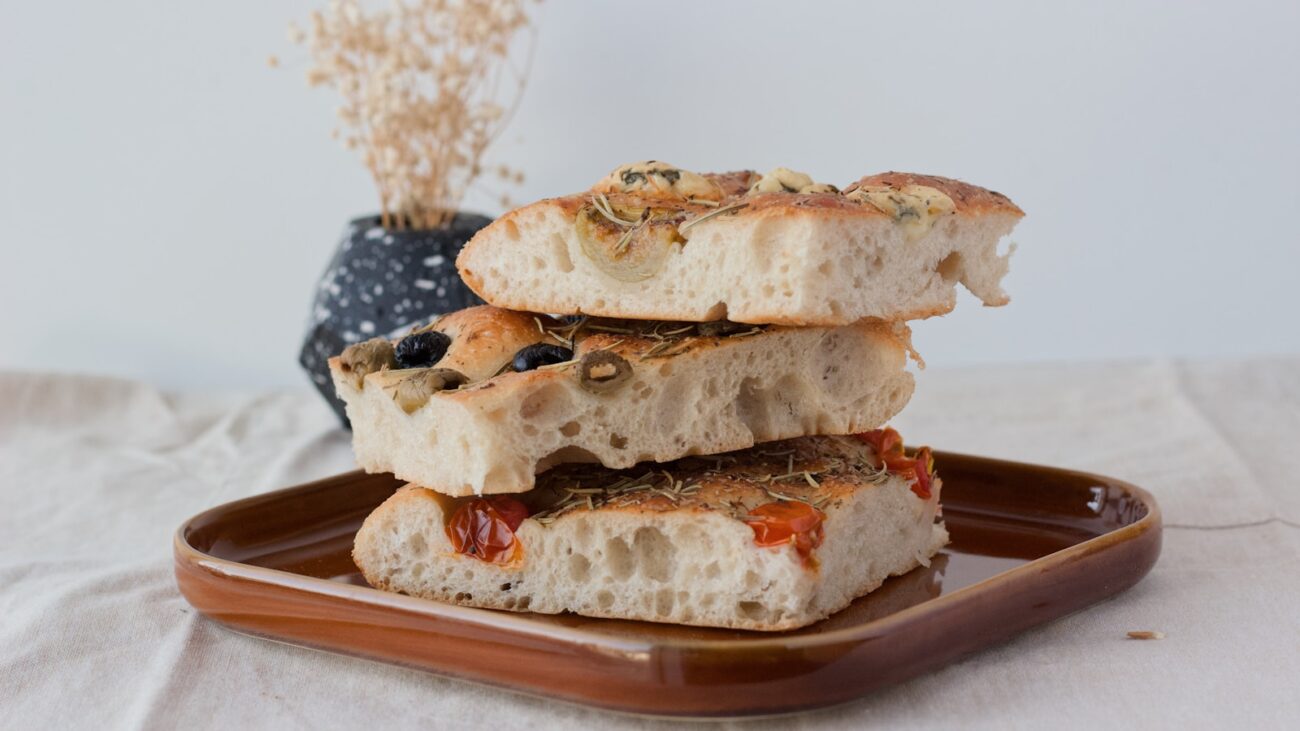Focaccia is one of Italy’s most beloved breads—soft, airy, and often flavored with olive oil, herbs, or toppings like tomatoes and olives.
While it’s undeniably delicious, many people wonder: Is focaccia healthy?
Let’s break down its calories, nutrition profile, and potential health benefits.
What Is Focaccia?
Focaccia is a flat oven-baked bread similar in style to pizza dough. Traditional recipes use flour, water, yeast, salt, and plenty of olive oil, giving it its rich flavor and chewy texture. Variations include sweet, savory, and even stuffed versions, depending on the region in Italy.
Calories and Nutrition in Focaccia
The nutritional value of focaccia depends on portion size and ingredients. On average, a 100-gram serving of plain focaccia provides:
- Calories: ~250–300 kcal
- Carbohydrates: 45–50 g
- Protein: 7–9 g
- Fat: 7–10 g (mostly from olive oil)
- Fiber: 1–2 g
Key Nutrients
- Olive oil adds heart-healthy monounsaturated fats.
- Carbohydrates provide quick energy.
- Protein supports muscle function.
- B vitamins (from flour and yeast) aid in energy metabolism.
If topped with vegetables, herbs, or seeds, focaccia can also supply extra antioxidants, fiber, and minerals.
Health Benefits of Focaccia
While focaccia is considered a comfort food, it does come with some benefits:
1. Source of Energy
Its carbohydrate content makes focaccia a quick fuel source, perfect for active days.
2. Heart-Healthy Fats
Traditional focaccia is rich in olive oil, which supports heart health, reduces inflammation, and may improve cholesterol levels.
3. Versatile Nutritional Base
Focaccia can be customized with toppings like tomatoes, onions, olives, rosemary, garlic, or seeds, adding extra vitamins, minerals, and antioxidants.
4. Supports Satiety
Thanks to its balance of carbs, fat, and protein, focaccia can keep you feeling satisfied when eaten in moderation.
5. Enjoyment and Well-Being
Food isn’t just about nutrients—it’s also about pleasure. Sharing focaccia at a meal can promote social bonding and cultural appreciation.
Things to Watch Out For
Despite its benefits, focaccia should be enjoyed in moderation:
- Calorie-dense: Olive oil adds flavor but also increases calorie content.
- High in refined carbs: Made with white flour, it may spike blood sugar.
- Sodium content: Salt in the dough and toppings can make focaccia high in sodium.
How to Make Focaccia Healthier
If you love focaccia but want a more balanced version, try these tweaks:
- Use whole wheat flour for more fiber.
- Add toppings like vegetables, seeds, or fresh herbs for extra nutrients.
- Reduce salt and rely on herbs and garlic for flavor.
- Enjoy focaccia as part of a meal with lean protein and salad, instead of eating it alone.

Focaccia is more than just bread—it’s a flavorful, cultural staple with both indulgent and nourishing qualities. While it can be high in calories and refined carbs, it also provides healthy fats and can be made more nutritious with smart ingredient choices.
The key is balance: enjoy focaccia in moderation, pair it with wholesome foods, and savor it as part of a healthy lifestyle.

